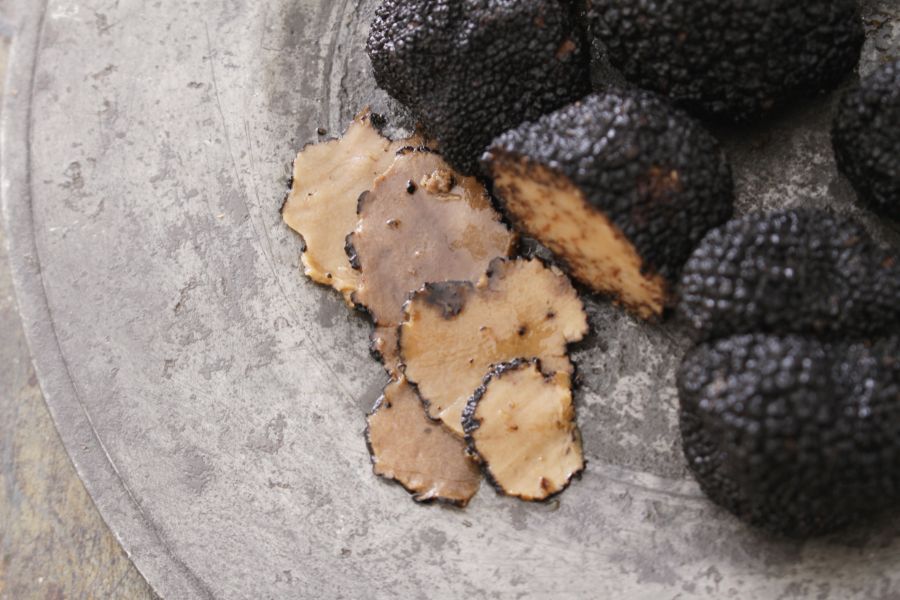Although Europe gets most of the attention when it comes to gourmet truffles, several species grow naturally in parts of the United States. You might be surprised to learn that truffles can be found in Pennsylvania.
These native truffles form a hidden network beneath the leaf litter and soil, often near established hardwoods. They’re not always easy to identify, but they’re out there.
With Pennsylvania’s range of forest types and public access areas, there are more potential hotspots than people might realize. Once you learn where to start, the rest of the search becomes much more focused.
What We Cover In This Article:
- What Wild Truffles Look Like
- Truffle Lookalikes To Avoid
- Best Practices For Finding Truffles
- Where You Can Find Truffles Around The State
- Other Great Locations For Truffles
- When The Best Time Of The Year Is To Find Truffles
- The extensive local experience and understanding of our team
- Input from multiple local foragers and foraging groups
- The accessibility of the various locations
- Safety and potential hazards when collecting
- Private and public locations
- A desire to include locations for both experienced foragers and those who are just starting out
Using these weights we think we’ve put together the best list out there for just about any forager to be successful!
A Quick Reminder
Before we get into the specifics about where and how to find these plants and mushrooms, we want to be clear that before ingesting any wild plant or mushroom, it should be identified with 100% certainty as edible by someone qualified and experienced in mushroom and plant identification, such as a professional mycologist or an expert forager. Misidentification can lead to serious illness or death.
All plants and mushrooms have the potential to cause severe adverse reactions in certain individuals, even death. If you are consuming wild foragables, it is crucial to cook them thoroughly and properly and only eat a small portion to test for personal tolerance. Some people may have allergies or sensitivities to specific mushrooms and plants, even if they are considered safe for others.
The information provided in this article is for general informational and educational purposes only. Foraging involves inherent risks.
What Wild Truffles Look Like
The U.S. is home to several native truffle species that grow wild in forests across the country. Each one has its own unique scent, appearance, and preferred habitat. Here are the types of truffles you can find:
Oregon Black Truffles (Leucangium carthusianum)
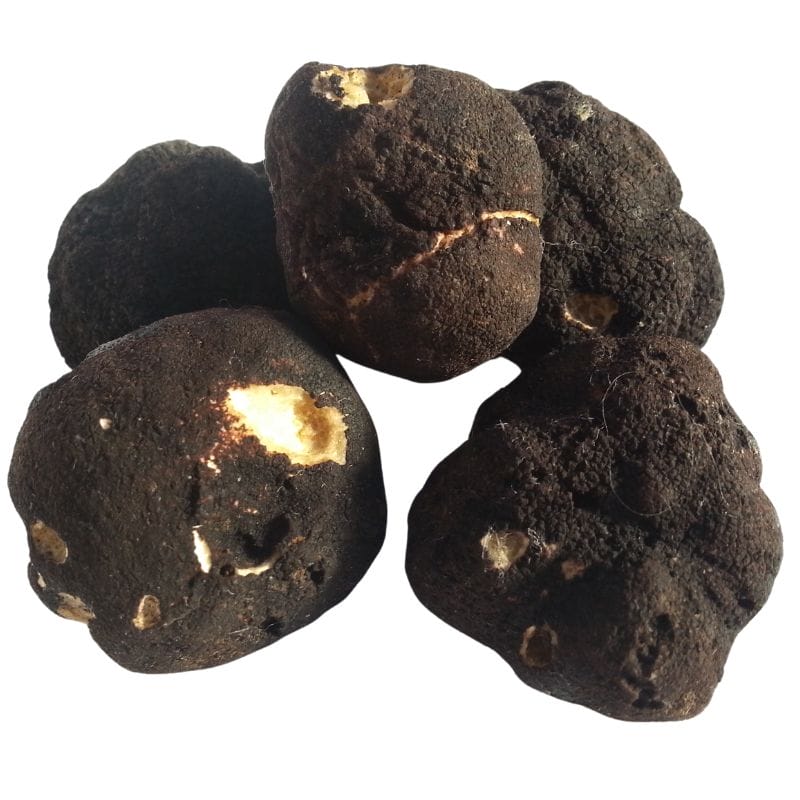
Leucangium carthusianum, also called the Oregon black truffle, grows in the Pacific Northwest and usually shows up around Douglas-fir trees. It’s a native species and one of the more well-known edible truffles from the region.
On the outside, it looks like a small lump of coal—dark black, kind of lumpy or warty, and sometimes slightly smoother in spots. They’re usually about the size of a golf ball, but they can be smaller or larger depending on the season.
Inside, the truffle is firm with a marbled pattern of gray and white veins running through it. When it’s fresh, it smells fruity, almost like pineapple, but the scent gets stronger and muskier as it ripens.
If you’re out looking for them, check in moist, shady forests with soft, loamy soil, especially where there’s a lot of moss or ferns. They grow just below the surface, so people often use trained dogs to help sniff out the ripe ones.
Compared to the Oregon white truffle, which is lighter in color and has a sharper, garlicky aroma, the black truffle has a deeper, more earthy smell. It’s also bigger and firmer than the southern U.S. truffles like Tuber lyonii, which tend to be smaller, paler, and grow around hardwoods like oaks and hickories.
Oregon Winter White Truffles (Tuber oregonense and Tuber gibbosum)
Oregon has two native white truffles that are starting to get more attention: the Oregon Winter White Truffle (Tuber oregonense) and the Oregon Spring White Truffle (Tuber gibbosum). They grow underground in forests and are prized for their strong, savory aroma.
From the outside, these truffles are small, roundish, and kind of bumpy, usually pale beige to light brown. Cut one open, and you’ll see a white interior that darkens with age, showing off a web of white veins when it’s fully mature.
The Winter White Truffle pops up from late fall into February, while the Spring White starts showing up around January and can last into June. They’re pretty similar, but the Winter variety is known for having a more powerful scent and flavor.
To find them, you’ll want to look in forests with younger Douglas-fir trees on the west side of the Cascades. Truffle hunters often check for loose soil or spots where animals have been scratching, which can be a sign there’s something below.
When fully ripe, both types give off a bold smell that’s often compared to garlic, cheese, or earthy spices. They’re usually served raw, shaved over dishes to add that truffle kick without losing any of the aroma.
Appalachian Truffle (Tuber canaliculatum)
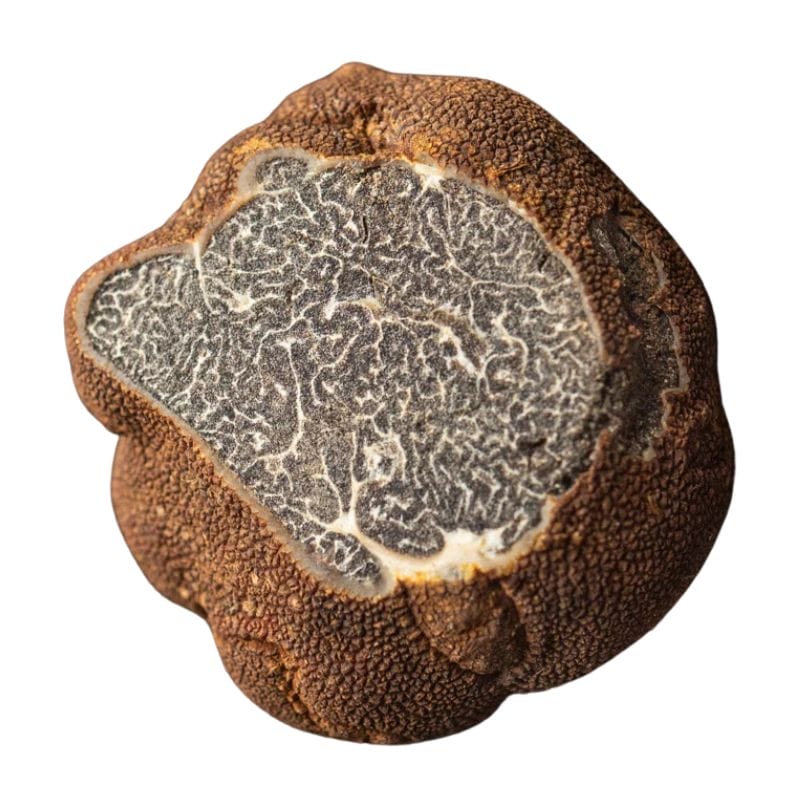
The Appalachian truffle, also known as Tuber canaliculatum, is a native North American truffle that’s slowly getting noticed. It’s about the size of a walnut and has a reddish-brown, bumpy outer surface that looks kind of like a rough, warty potato.
When you cut it open, the inside is firm and dark brown with thin white veins running through it like a marbled pattern. If it’s fully ripe, the smell is strong and earthy—some say it has a kind of nutty, funky aroma that stands out.
You can find these truffles in mixed hardwood forests, especially around oaks and pines, from late summer through fall. They grow underground, so look for spots where the soil is loose and animals like squirrels have been digging—sometimes that’s a good clue.
If you’re foraging, gently raking the top layer of soil near tree roots can help, but a trained dog or even a good nose makes it way easier. Once you know what to look for, the reddish color and bumpy skin are good signs you’ve found the right thing.
Compared to truffles like Tuber oregonense or Leucangium carthusianum, Tuber canaliculatum is more subtle in every way. Its smaller size and lighter scent mean you have to pay closer attention when foraging.
It’s also not as popular in the culinary world because it doesn’t pack the same punch in terms of flavor or aroma. Still, finding one can be rewarding, especially if you’re exploring different types of fungi in the area.
Desert Truffle (Terfezia and Tirmania spp.)
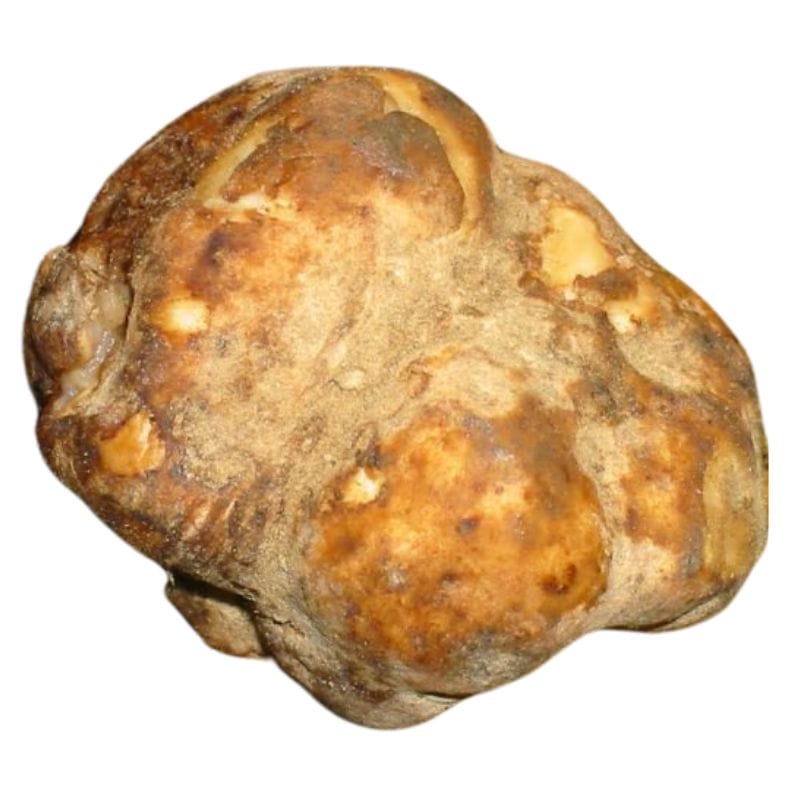
Terfezia and Tirmania are two types of truffles that are sometimes called desert truffles. These are a bit different from the truffles we usually think of, with their bold flavors and rich aromas.
These ones are a little more understated, but they’re fascinating in their own right. What makes them stand out is their ability to thrive in dry, harsh environments where you wouldn’t expect something so delicate to grow.
Unlike the earthy, intense aroma of black or white truffles, Terfezia and Tirmania truffles have a milder scent and flavor. They’re often described as nutty, with a hint of sweetness, but they lack the strong garlicky or musky notes you might associate with other truffles.
Their texture is also different—more firm and less oily than what you’d find with species like Tuber oregonense. They might not have the same culinary punch, but they’re still prized in traditional dishes, where their subtle flavors shine in simpler recipes.
When it comes to appearance, they’re easy to spot once you know what you’re looking for. They’re round to slightly irregular in shape, and their color can range from light beige to a reddish-brown, depending on the species.
The surface is usually smooth or slightly textured, without the rough, knobby look of a black truffle. Cut one open, and you’ll see a pale interior that’s often uniform in color, lacking the intricate veining you’d see in something like Leucangium carthusianum.
Pecan Truffle (Tuber lyonii)
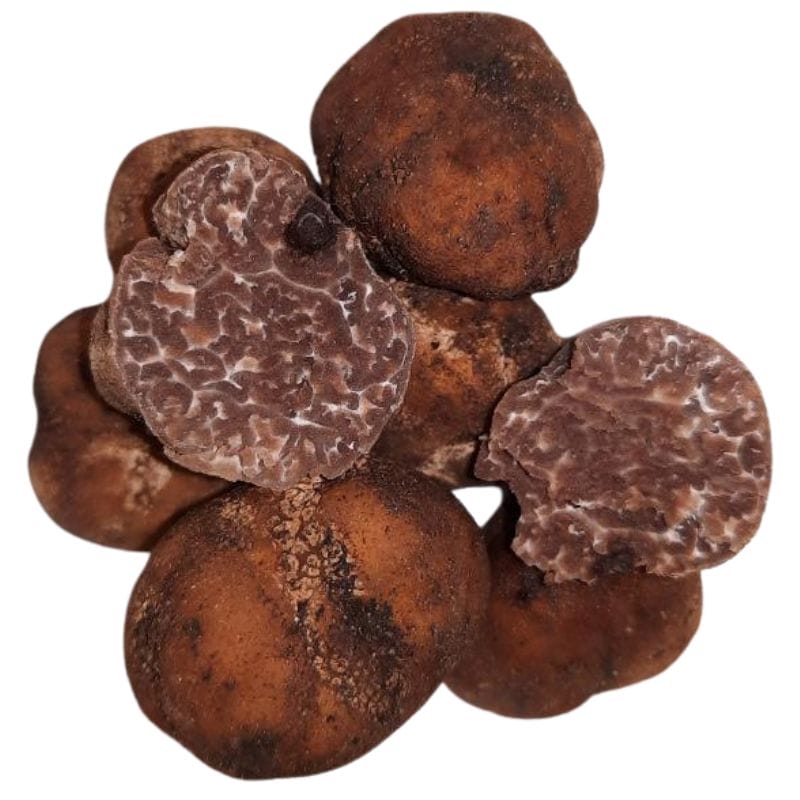
Tuber lyonii, also known as the pecan truffle, is a native North American truffle that grows underground near the roots of pecan trees. You’ll mostly find it in the southeastern U.S., especially in states like Texas, Georgia, and Mississippi.
On the outside, pecan truffles are round to lumpy and have a smooth, light brown skin that darkens as they age. They’re usually about the size of a marble or golf ball, and sometimes they even poke up slightly through the soil surface.
If you slice one open, the inside has a pretty marbled look—light tan streaks mixed with darker brown, almost like wood grain. The smell is earthy, nutty, and kind of warm, especially when they’re fully mature.
When you’re out looking for them, check under mature pecan trees or other hardwoods like oaks and hickories. Trained dogs can help sniff them out, but people sometimes spot them by looking for little cracks in the soil or raised areas near the tree’s base.
Compared to other U.S. truffles like the Oregon white truffle or the Appalachian black truffle, pecan truffles have a milder flavor and are more common in orchards. They’re a solid option in the kitchen—freshly sliced over pasta or mixed into butter—and they don’t come with the high price tag of their European cousins.
Truffle Lookalikes To Avoid
When you’re out hunting you also need to know about a few different fungi species that look very similar to the delicious truffles we’re after but are either inedible or not worth eating. Keep an eye out for:
Pine Truffles (Geopora cooperi)

Geopora cooperi is a fungus that can easily confuse someone new to truffle hunting. It’s sometimes called the pine truffle because it grows underground like a true truffle and often pops up near certain trees.
At first glance, it might seem like you’ve hit the jackpot, but this one is a false truffle, not something you’d want to eat or sell.
The easiest way to tell Geopora cooperi apart from real truffles is by looking closely at its structure. While true truffles have a smooth or slightly knobby exterior and a marbled interior, Geopora cooperi has a rougher, more irregular outer surface.
When it matures, it sometimes splits open, revealing a cup-like shape, which true truffles never do. Inside, it’s less dense and doesn’t have the intricate veining that makes real truffles so unique.
Another big difference is the smell. True truffles have a strong, rich aroma that’s earthy, sweet, or garlicky, depending on the species. Geopora cooperi, on the other hand, has a much weaker scent, and it’s not as pleasant or distinctive.
If you’re relying on aroma to identify your find, this one will give itself away pretty quickly. So, while it might look similar at first, a closer inspection will show it’s not the culinary treasure you’re hoping for.
Stinking Slime Truffle (Melanogaster ambiguus)
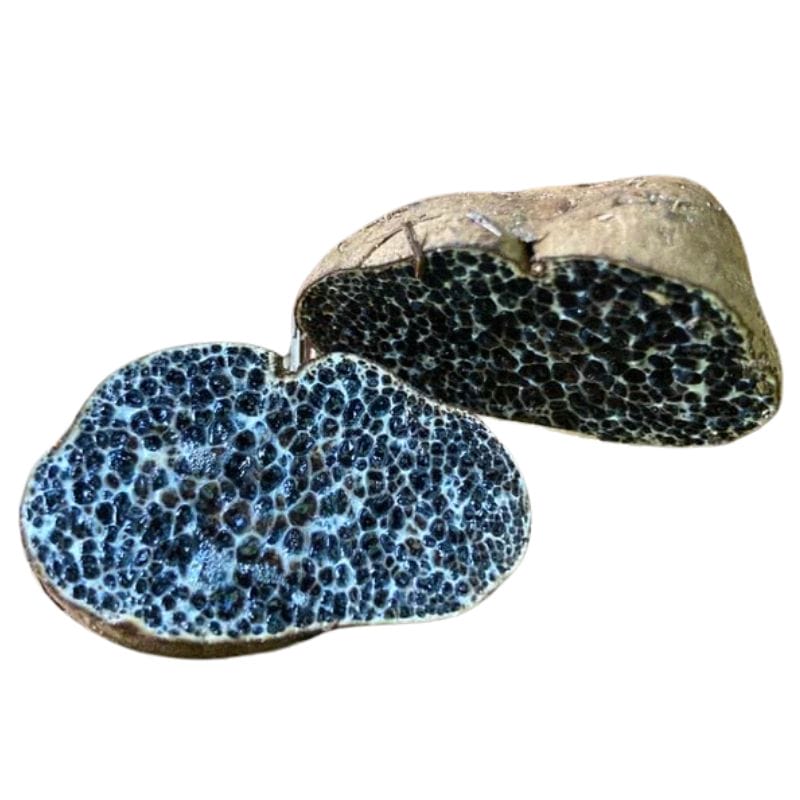
Melanogaster Ambiguus, because of their reddish-brown to dark brown exterior, might look like true truffles at first glance, but they’re quite different when you know what to look for.
The key difference is on the inside. When you cut open Melanogaster ambiguus, the interior is filled with flattened cells that have a shiny black gelatinous feel to them. Real truffles, on the other hand, have those beautiful marbled veins running through their flesh, almost like a web.
Another giveaway is the smell. While real truffles have a rich, earthy aroma that’s mouthwatering, Melanogaster ambiguus tends to have a much stronger, almost unpleasant odor—it’s not something you’d want to sprinkle on your pasta.
Earthballs (Scleroderma)
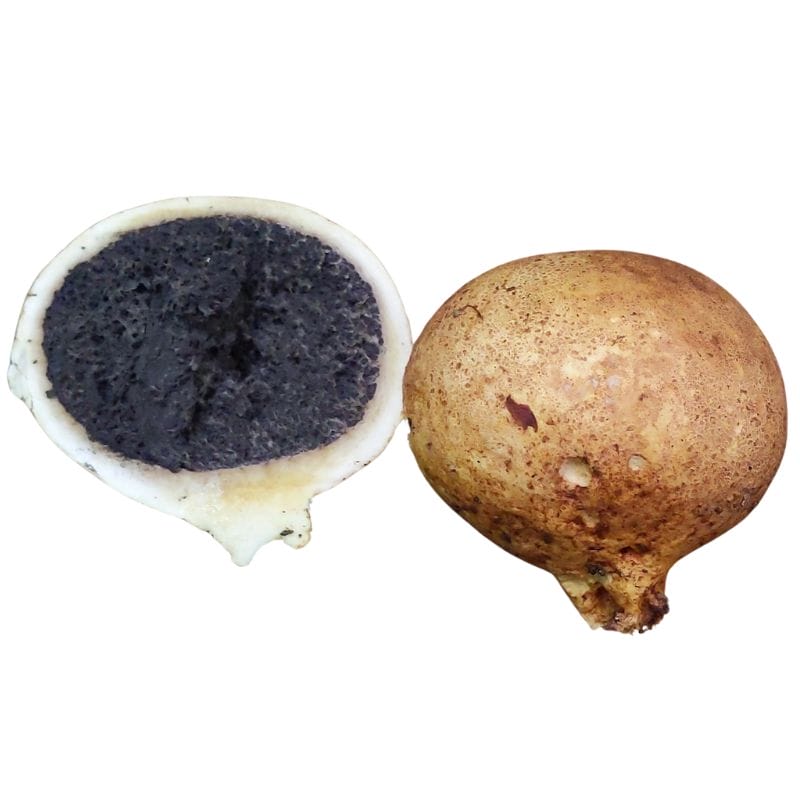
Scleroderma, commonly called earthballs, can easily fool someone who’s just starting out because they grow underground and have a round shape similar to truffles. But don’t be tricked—Scleroderma is not a true truffle, and it’s actually toxic, so it’s important to know how to tell the difference.
The first thing you’ll notice is the outer skin, which is thicker and tougher than that of most truffles. It can range in color from yellowish to dark brown, often with a rough or cracked texture.
If you cut it open, the difference becomes even clearer. While true truffles have a marbled interior with delicate white veins, Scleroderma starts out with a whitish inside that quickly darkens as it matures, turning black or purple with no marbling. It’s dense and solid, almost like charcoal in the later stages.
Another big giveaway is the smell. True truffles have a rich, earthy aroma that makes them so prized, while Scleroderma has little to no pleasant scent—some even describe it as musty or unpleasant.
Deer Truffles (Elaphomyces)
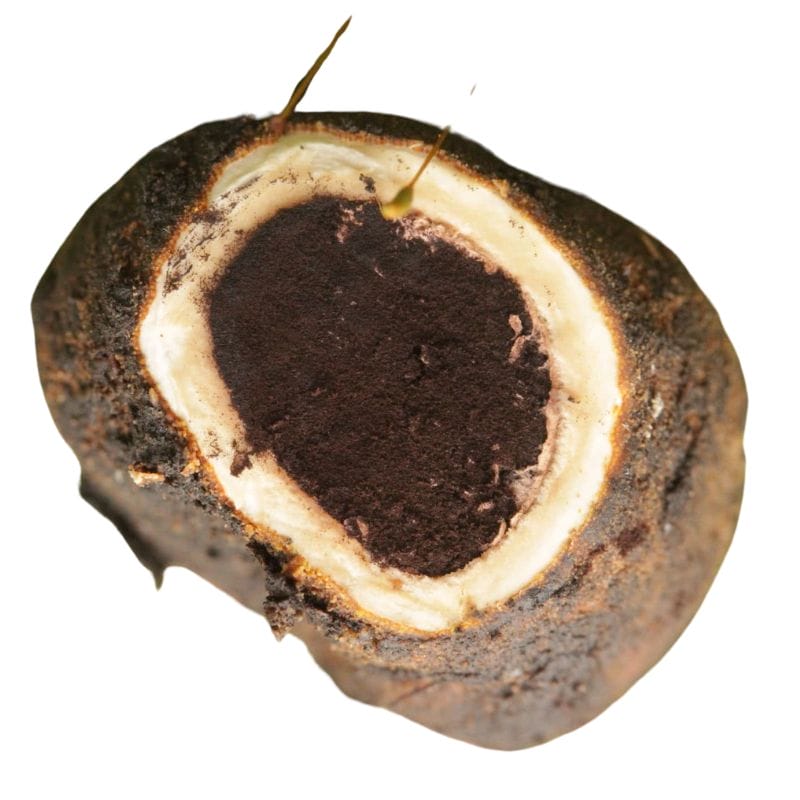
Elaphomyces, also known as deer truffles, look like true truffles at first glance, but they’re a whole different story. They’re called deer truffles because wildlife, especially deer and rodents, love to eat them. For us humans, though, they’re not edible—and definitely not what you want to mistake for a prized truffle.
Here’s how you can tell Elaphomyces apart from the real thing. First, they have a tough, warty outer surface that can range from pale tan to black, depending on the species and their age.
When you cut them open, the inside is solid and sometimes speckled or marbled, but not in the delicate, vein-like pattern you’d see in true truffles.
Their smell is also a big giveaway. Instead of the rich, earthy aroma of an edible truffle, Elaphomyces either has little scent or an odor that’s earthy but not particularly appealing.
Another thing to know is that Elaphomyces often grows deeper in the soil than true truffles, and they tend to have a harder, woodier texture.
Best Practices For Finding Truffles
Truffle hunting can be a rewarding adventure if you know the right tips and tricks. Here’s what you should keep in mind to improve your chances of finding these underground treasures:
Wait 10 to 14 Days After Heavy Rain
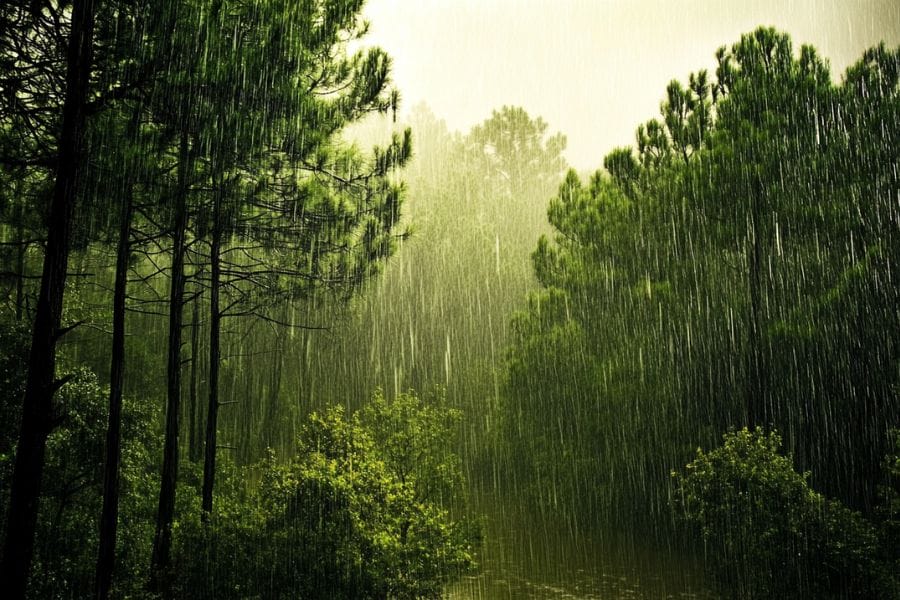
After a heavy rain, it’s best to wait about 10 to 14 days before heading out. This gives the truffles time to mature and release their signature aroma, making it easier for you (and your dog) to sniff them out. Rain helps truffles grow, but they don’t start giving off their scent right away.
As the soil warms up, the truffles get more aromatic, and the ground becomes looser, which makes digging easier without disturbing the environment too much. The timing is perfect to find truffles at their best—both in quality and in how easy they are to locate.
Find the Right Trees

Truffles don’t grow just anywhere—they have a special relationship with certain trees. You won’t find them under just any tree, so knowing which ones to look for can make all the difference. Some of the best trees to look out for are:
- Pines
- Douglas-firs
- Oaks
- Hazelnuts
- Cypresses
- Willows
For example, if you’re looking for Oregon white truffles, keep an eye out for Douglas-fir trees. California black truffles, on the other hand, are often found near oaks and hazelnuts. The soil around these trees also needs to be slightly alkaline, so it helps to know what kind of ground you’re walking on as well.
Watch for Wildlife Activity
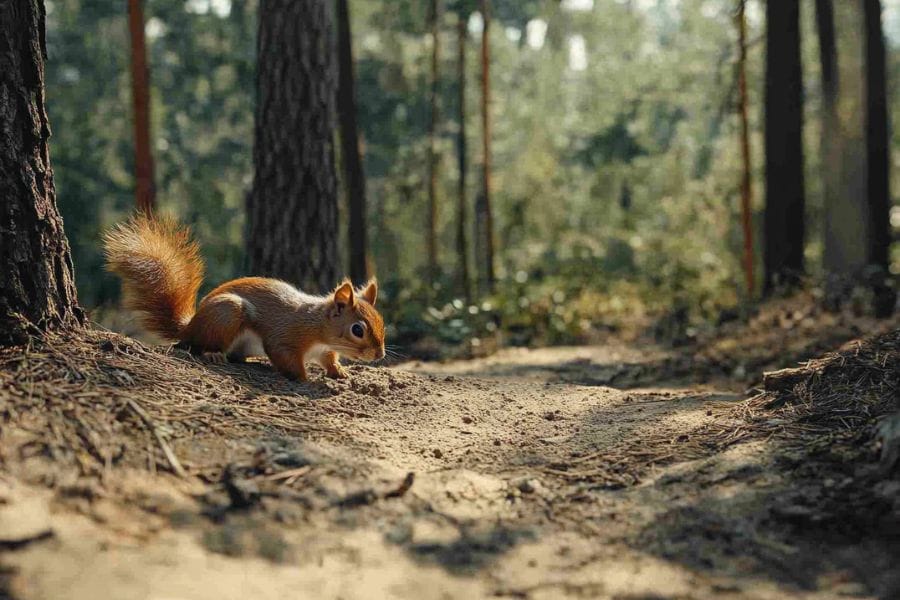
Animals like squirrels and chipmunks often help spread truffle spores, and sometimes their digging can lead you straight to truffles. While you won’t always find truffles in every pit animals dig (they also look for things like acorns or bulbs), fresh digs are a good clue. The more recent the pit, the better chance it has of leading to truffles.
Even though animals are a part of the truffle cycle, most hunters prefer using dogs to find the real treasure underground. Dogs have an incredible nose for truffles and can pinpoint their location much more reliably than any squirrel or chipmunk.
Get a Little Help from a Truffle-Hunting Dog
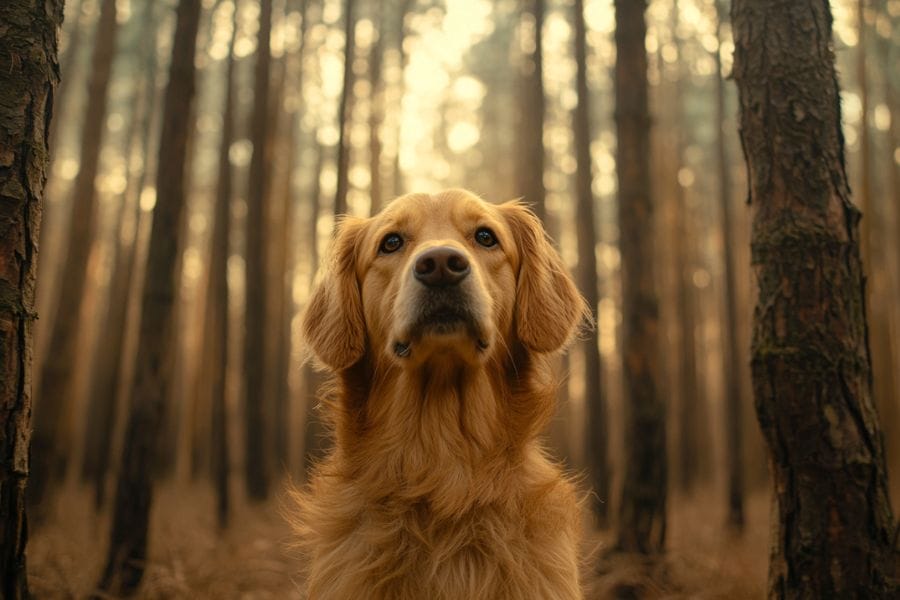
If you’re serious about truffle hunting, a trained dog can make your life a whole lot easier. Their sense of smell is extraordinary, and they’re trained to find mature truffles buried beneath the surface. Many truffle hunters swear by their dogs, and for good reason—they’re much more accurate than humans when it comes to sniffing out truffles.
If you don’t already have a trained dog, you can connect with local foraging groups or specialized trainers who offer truffle-hunting services. Some places even host events where you can see experienced handlers with their dogs in action. And if you’re feeling adventurous, you can train your own dog using truffle-scent kits and practice in a controlled space before hitting the woods.
Before you head out
Before embarking on any foraging activities, it is essential to understand and follow local laws and guidelines. Always confirm that you have permission to access any land and obtain permission from landowners if you are foraging on private property. Trespassing or foraging without permission is illegal and disrespectful.
For public lands, familiarize yourself with the foraging regulations, as some areas may restrict or prohibit the collection of mushrooms or other wild foods. These regulations and laws are frequently changing so always verify them before heading out to hunt. What we have listed below may be out of date and inaccurate as a result.
Where You Can Find Truffles Around The State
Now we’re going to go over five of the best locations for finding truffles. We’ll go a bit in-depth here and then provide a much longer list of other spots to try.
Rothrock State Forest

Rothrock State Forest covers over a hundred thousand acres of ridge and valley terrain in central Pennsylvania. The diverse landscape includes mountain ridges, streams, and valleys filled with oak, hickory, and maple trees. This varied terrain creates multiple microhabitats where truffles thrive.
For successful truffle hunting, explore the moist areas near creek beds where the soil stays cool. The Alan Seeger Natural Area offers prime conditions with its old-growth forest and rich organic matter. Look for truffles around beech trees, especially where the forest floor has thick leaf litter.
The slightly acidic soil beneath mature oaks near Whipple Dam is particulaly productive for certain truffle species. Search carefully around tree roots, raking gently through the top layer of soil to reveal the treasures below. The forest’s extensive trail system makes accessing these promising areas relatively easy.
Michaux State Forest
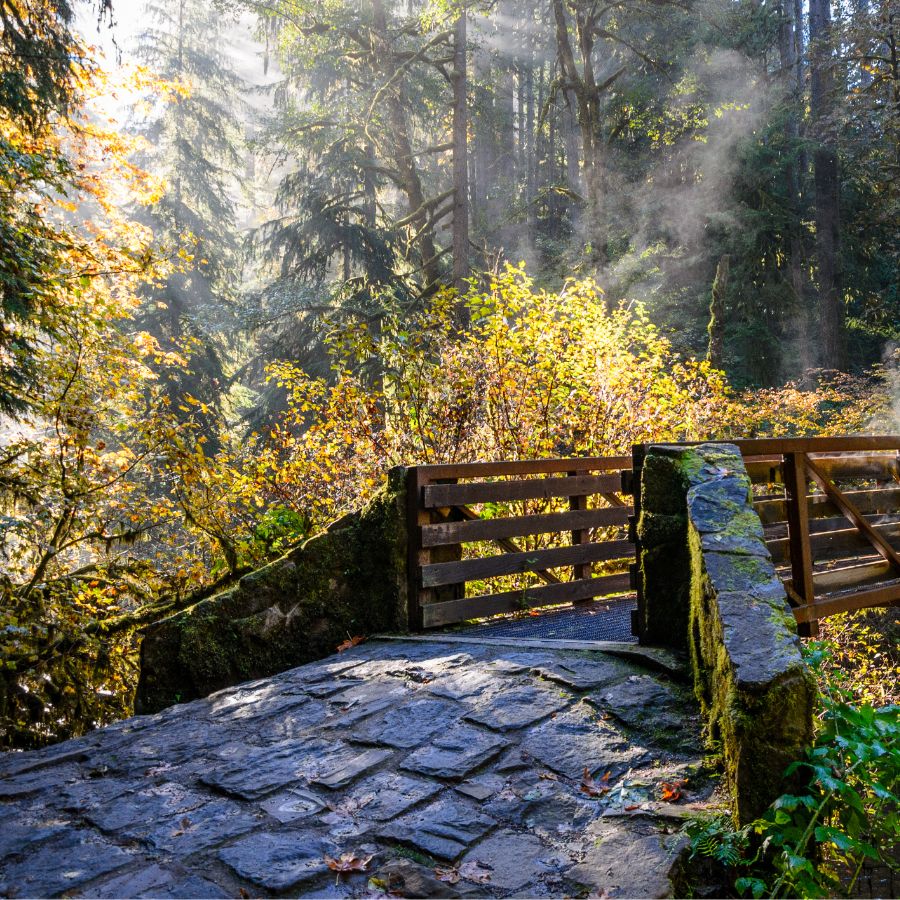
Michaux State Forest spans across Adams, Cumberland, and Franklin counties in Pennsylvania’s South Mountain region. This historic forest was the Commonwealth’s first forestry reservation and features diverse ecosystems from rocky outcroppings to wetlands.
The Long Pine Run Watershed area maintains perfect moisture levels for truffle development. Search around eastern hemlock groves where truffles form mycorrhizal relationships with tree roots. The decomposing leaf matter creates nutrient-rich soil that supports healthy fungal networks.
Near Caledonia State Park, the mature hardwood forests harbor several truffle varieties. The slightly alkaline soil around Curve Lake offers ideal conditions for limestone-loving truffle species.
Moraine State Park
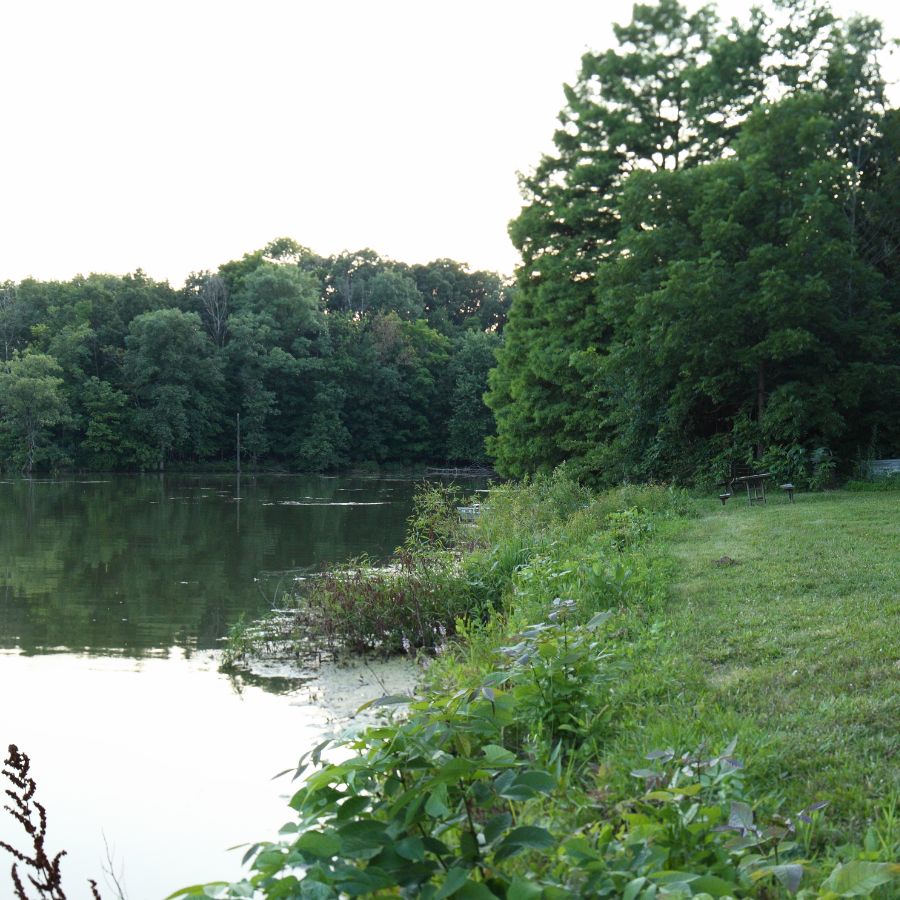
Moraine State Park in Butler County features unique glacial deposits and surrounds the 3,000-acre Lake Arthur. The park’s name comes from the glacial moraine that created its rolling topography and distinctive soil composition.
The mixed hardwood forests on the north shore contain excellent truffle habitat. These areas have well-drained soil with proper moisture retention that truffles need. Seek out mature beech and oak stands where mycorrhizal relationships support truffle development.
Pleasant Valley offers prime hunting grounds away from heavily trafficked areas. Look for truffles by gently raking through leaf litter near tree bases, particularly in spots with dappled sunlight. The western section of the park remains quieter, allowing fungal networks to flourish undisturbed in the nutrient-rich glacial soils.
Allegheny National Forest
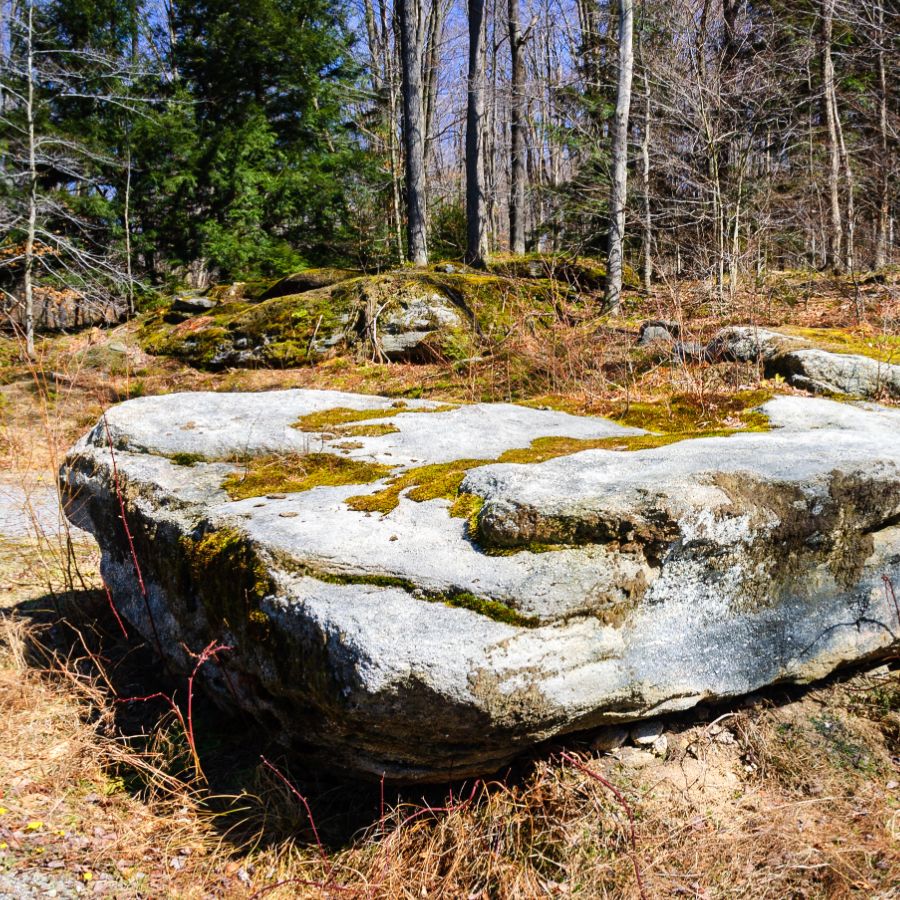
Allegheny National Forest is Pennsylvania’s only national forest, covering over 500,000 acres in the northwestern region. The forest sits on the Allegheny Plateau with its characteristic rolling hills and valleys carved by glaciers thousands of years ago.
The Tionesta Research Natural Area contains some of the oldest trees in the forest, creating perfect truffle habitat. These undisturbed areas have developed complex fungal networks essential for truffle production. Search carefully around beech and oak trees, looking about 1-3 inches below the surface.
The Hearts Content Scenic Area offers another promising hunting ground with its old-growth forest and rich soil. Minister Valley’s north-facing slopes maintain ideal moisture conditions even during dry periods. The cooler microclimates in these areas support truffle development throughout much of the growing season.
French Creek State Park
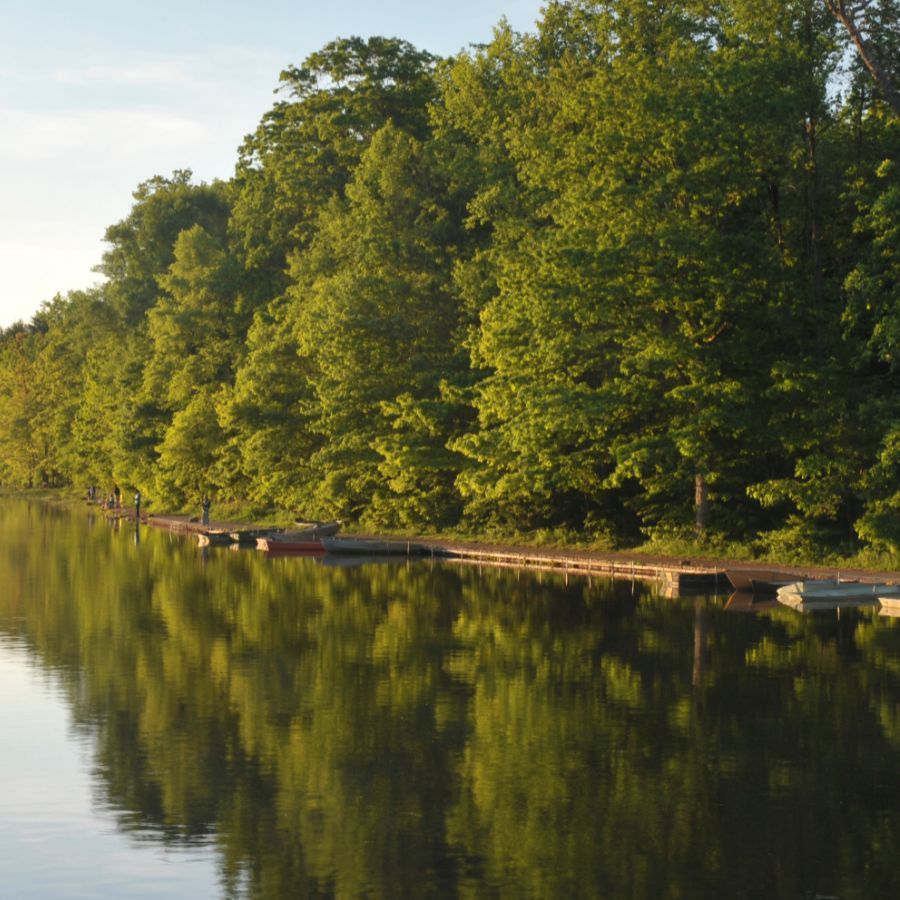
French Creek State Park encompasses over 7,730 acres of forest in southeastern Pennsylvania between Hopewell and Scotts Run lakes. The park’s unique history as a charcoal production site for Hopewell Furnace has created distinct soil conditions rich in carbon.
The Six Penny Trail area offers excellent opportunities for truffle hunting in its undisturbed forest. The mature tree stands here have established extensive root systems that support mycorrhizal fungi. Look in areas with minimal undergrowth where dappled sunlight reaches the forest floor.
Former charcoal production areas between Hopewell Lake and the park boundaries create unique growing conditions for certain truffle species.
The Mill Creek Trail showcases varied terrain and diverse tree species that support different truffle varieties. Search where soil is slightly acidic with good drainage, particularly around oak trees with their extensive root systems.
Other Great Locations For Truffles
| Western Pennsylvania | Collection Guideline |
|---|---|
| Cook Forest State Park | Gather a day-pack amount beneath the hemlock “Forest Cathedral” for home use only. |
| Erie Bluffs State Park | Dig a modest stash under oak–maple leaf litter along Elk Creek; hand-carry it out. |
| Jennings Environmental Education Center | Lift a few truffle nodules from sandy prairie edges, strictly non-commercial. |
| Keystone State Park | Collect a pocket-sized cache near the shady Hemlock Trail; no large tools. |
| Laurel Hill State Park | Probe the rich spruce duff for a meal-quantity haul; rakes discouraged. |
| McConnells Mill State Park | Slip a few truffles from mossy ravines and carry them in a small cloth pouch. |
| Moraine State Park | Hand-gather limited truffles under beech and birch north of Lake Arthur. |
| Ohiopyle State Park | Personal digging along Ferncliff’s rich soils is fine, leave no visible pits. |
| Raccoon Creek State Park | Harvest a quart-bag or less beneath mixed hardwoods on the Forest Trail. |
| Ryerson Station State Park | Upland ridges allow small-scale foraging; take only what you’ll eat. |
| Central Pennsylvania | Collection Guideline |
|---|---|
| Bald Eagle State Forest | Household-scale collecting permitted on oak-ridge flats; hand tools only. |
| Bald Eagle State Park | Lift a meal’s worth from shaded coves above the lake, no bulk bags. |
| Black Moshannon State Park | Take a fistful or two from sphagnum-lined gullies; large hauls banned. |
| Colton Point State Park | Dig along Pine Creek Gorge rim and replace soil plugs neatly afterward. |
| Elk State Forest | Forage under white pines for kitchen portions using hand-held tools. |
| Greenwood Furnace State Park | Gather a camp-pot share near historic charcoal flats; keep roots intact. |
| Little Pine State Park | Dig discreetly in moist hollows; limit the harvest to family needs. |
| Rothrock State Forest | Personal foragers target limestone soils; no mechanised equipment. |
| Susquehannock State Forest | Collect a modest sack beneath mixed hardwoods for home cooking. |
| South-Central Pennsylvania | Collection Guideline |
|---|---|
| Buchanan State Forest | Harvest a sandwich-bag amount along shaded hollows; no sales allowed. |
| Caledonia State Park | Dig lightly beside mountain-laurel thickets and leave the floor tidy. |
| Codorus State Park | Pull a small cache around mature oaks near Lake Marburg; no buckets. |
| Colonel Denning State Park | Personal truffle gathering on ridge-tops is fine. |
| Kings Gap Environmental Education Center | Pocket-sized harvests welcome in oak barrens; educational digs common. |
| Pine Grove Furnace State Park | Collect a cook-pan share beneath tulip-poplars; hand tools only. |
| Poe Valley State Park | Take a supper-portion from loamy creek benches with trowels or fingers. |
| Trough Creek State Park | Unearth a handful near rhododendron coves; personal use only. |
| Northeast Pennsylvania | Collection Guideline |
|---|---|
| Beltzville State Park | Pick limited truffles beneath beech litters on shoreline trails. |
| Frances Slocum State Park | Dig a small take in the mixed oak understory, family-recipe size. |
| Hickory Run State Park | Boulder Field fringes hide truffles, collect a cupful and restore moss. |
| Lackawanna State Park | Scoop out just enough for tonight’s pasta near Kennedy Creek. |
| Nescopeck State Park | Harvest a few nodules from red-oak hummocks; no rakes or shovels. |
| Promised Land State Park | Plateau soils yield choice truffles, use a small cloth bag only. |
| Ricketts Glen State Park | Gather a meal-sized bundle under towering hemlocks along waterfalls. |
| Tobyhanna State Park | Hand-dig modest amounts on spruce flats; keep holes shallow. |
| Vosburg Neck State Park | Seasonal picking allowed in fertile floodplain forests, one batch at a time. |
| Southeast Pennsylvania | Collection Guideline |
|---|---|
| Benjamin Rush State Park | Urban foragers may lift a single-meal portion beneath young poplars. |
| Evansburg State Park | Dig sparingly along Skippack Creek floodplain and replace leaf cover. |
| French Creek State Park | Harvest a pan-sized haul under chestnut-oak stands; hand tools only. |
| Marsh Creek State Park | Collect a few truffles from wooded slopes above the lake; home use only. |
| Neshaminy State Park | Limited digging is fine beside riparian woodlands; fill in disturbed soil. |
| Nockamixon State Park | Take enough from shaded limestone pockets for family meals; no bulk. |
| Ridley Creek State Park | A handful may be gathered in beech groves, leave the floor tidy. |
| Tyler State Park | Collect a cook’s amount along upland trails with only small trowels. |
When The Best Time Of The Year Is To Find Truffles
Truffle hunting in Pennsylvania works best during fall and winter months. Most local varieties reach peak ripeness between October and February. The cooler temperatures help truffles develop their signature aroma.
Late autumn brings ideal conditions as the soil retains moisture from fall rains. Some Pennsylvania truffle hunters start their search after the first frost. This timing often matches when truffles release their strongest scents.
Winter searches can be productive despite colder weather. The forest floor has less vegetation during winter months, making truffles easier to spot. Experienced foragers often continue their hunts through January when certain varieties reach full maturity.
One Final Disclaimer
The information provided in this article is for general informational and educational purposes only. Foraging for wild plants and mushrooms involves inherent risks. Some wild plants and mushrooms are toxic and can be easily mistaken for edible varieties.
Before ingesting anything, it should be identified with 100% certainty as edible by someone qualified and experienced in mushroom and plant identification, such as a professional mycologist or an expert forager. Misidentification can lead to serious illness or death.
All mushrooms and plants have the potential to cause severe adverse reactions in certain individuals, even death. If you are consuming foraged items, it is crucial to cook them thoroughly and properly and only eat a small portion to test for personal tolerance. Some people may have allergies or sensitivities to specific mushrooms and plants, even if they are considered safe for others.
Foraged items should always be fully cooked with proper instructions to ensure they are safe to eat. Many wild mushrooms and plants contain toxins and compounds that can be harmful if ingested.

